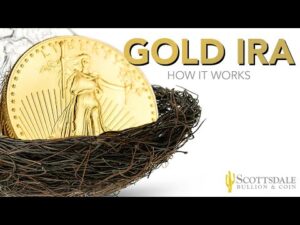
Over the past few months, the stablecoin landscape has remained relatively static, barely surpassing $123 billion as we traverse the third week of October. Despite a noticeable increase in fiat-pegged token trading this week, as of October 13, stablecoin transactions only constituted 22.96% of the global crypto economy's trade volume. Interestingly, just a day earlier, they made up 74% of all trades.
The Volatile State of Stablecoin Valuations and Trade Volumes
In the last month, the fiat-pegged token market has experienced several ups and downs. Tether (USDT), for instance, saw a minor 0.5% increase in its supply. On the other hand, USD Coin (USDC) had a 4.3% reduction in its stockpile. DAI, the third-largest stablecoin by market cap, suffered a 1.3% cut, while TrueUSD (TUSD) experienced a 6.5% rise. Notably, BUSD, which ranks fifth, witnessed a significant 15.5% decrease in its supply.
Market Capitalization of Prominent Stablecoins
Presently, the market capitalization of BUSD hovers around $2.13 billion, with the potential of falling below the $2 billion mark. Over the last month, Tron's USDD remained steady, whereas FRAX saw a modest 0.5% increase. However, Pax Dollar (USDP) wasn't as lucky, losing 7.2% of its supply. The newcomer, First Digital USD (FDUSD), saw an 18.7% supply increase. As of October 13, 2023, Paypal's new stablecoin is the 13th largest, with a circulation of 119 million.
Recent Fluctuations in the Stablecoin Economy
On the morning of October 13, stablecoins accounted for 22.96% of the $62 billion global trade volume, a significant contrast to the 74% recorded on October 12. That same evening, the stablecoin economy fell slightly below the $123 billion mark, with the global trade volume dropping to $34.13 billion. Apart from these market movements, Tether announced a leadership change this week. Paolo Ardoino, the former Chief Technology Officer, will take over as CEO in December, with the current CEO, Jean-Louis van der Velde, moving to an advisory role.
Unusual Developments in the Stablecoin Market
This week, a relatively unknown stablecoin, USDR, saw its value halve, now trading at 50% of its previous $1 parity. Managed by Tangibledao, this coin lost its parity on October 11 and hasn't recovered since. Despite the team's promise to address the issue via a post on social media platform X, the post remains private, therefore blocking any public responses. As a result, USDR has joined the increasing list of fiat-pegged tokens that have lost their dollar pegs.
Your Insights on the Current Stablecoin Market
What are your views on this week's stablecoin developments and the associated news? We invite you to share your thoughts and opinions on this topic below.
Frequently Asked Questions
How much gold do you need in your portfolio?
The amount of money you need to make depends on how much capital you are looking for. If you want to start small, then $5k-$10k would be great. Then as you grow, you could move into an office space and rent out desks, etc. This way, you don't have to worry about paying rent all at once. You just pay per month.
Also, you need to think about the type of business that you are going to run. In my case, we charge clients between $1000-2000/month, depending on what they order. Consider how much you expect to make from each client, if you decide to do this kinda thing.
You won't get a monthly paycheck if you work freelance. This is because freelancers are paid. So you might only get paid once every 6 months or so.
You need to determine what kind or income you want before you decide how much of it you will need.
I recommend starting with $1k-$2k in gold and working my way up.
What precious metals can you invest in for retirement?
It is gold and silver that are the best precious metal investment. They are both easy to trade and have been around for years. These are great options to diversify your portfolio.
Gold: This is the oldest form of currency that man has ever known. It is very stable and secure. It's a great way to protect wealth in times of uncertainty.
Silver: Silver is a popular investment choice. It is an excellent choice for investors who wish to avoid volatility. Silver tends to move up, not down, unlike gold.
Platinium: Another form of precious metal is platinum, which is becoming more popular. It's like silver or gold in that it is durable and resistant to corrosion. However, it's much more expensive than either of its counterparts.
Rhodium – Rhodium is used to make catalytic conversions. It is also used as a jewelry material. It is relatively affordable when compared to other types.
Palladium – Palladium is an alternative to platinum that's more common but less scarce. It's also more accessible. This is why it has become a favourite among investors looking for precious metals.
How Much of Your IRA Should Be Made Up Of Precious Metals
The most important thing you should know when investing in precious metals is that they are not just for wealthy people. They don't require you to be wealthy to invest in them. There are many ways to make money on silver and gold investments without spending too much.
You might also be interested in buying physical coins, such bullion rounds or bars. Stocks in companies that produce precious materials could be purchased. Or, you might want to take advantage of an IRA rollover program offered by your retirement plan provider.
No matter what your preference, precious metals will still be of benefit to you. These metals are not stocks, but they can still provide long-term growth.
They also tend to appreciate over time, unlike traditional investments. This means that if you decide on selling your investment later, you'll likely get more profit than you would with traditional investing.
Should You Invest in gold for Retirement?
It depends on how much you have saved and if gold was available at the time you started saving. If you're unsure about which option to choose then consider investing in both.
Gold offers potential returns and is therefore a safe investment. Retirees will find it an attractive investment.
Although most investments promise a fixed rate of return, gold is more volatile than others. Because of this, gold's value can fluctuate over time.
But this doesn't mean you shouldn't invest in gold. It is important to consider the fluctuations when planning your portfolio.
Another benefit of gold is that it's a tangible asset. Gold is much easier to store than bonds and stocks. It can be easily transported.
As long as you keep your gold in a secure location, you can always access it. Additionally, physical gold does not require storage fees.
Investing in gold can help protect against inflation. As gold prices rise in tandem with other commodities it can be a good hedge against rising cost.
A portion of your savings can be invested in something that doesn't go down in value. Gold usually rises when stocks fall.
Another advantage to investing in gold is the ability to sell it whenever you wish. Like stocks, you can sell your position anytime you need cash. You don't even need to wait for your retirement.
If you do decide to invest in gold, make sure to diversify your holdings. Do not put all your eggs in one basket.
You shouldn't buy too little at once. Begin by buying a few grams. You can add more as you need.
It's not about getting rich fast. It is to create enough wealth that you no longer have to depend on Social Security.
Gold may not be the most attractive investment, but it could be a great complement to any retirement strategy.
Are gold investments a good idea for an IRA?
Any person looking to save money is well-served by gold. It is also an excellent way to diversify you portfolio. There's more to gold that meets the eye.
It has been used throughout the history of currency and remains a popular payment method. It's sometimes called “the world's oldest money”.
Gold, unlike other paper currencies created by governments is mined directly from the earth. Because it is rare and difficult to make, it is extremely valuable.
The supply-demand relationship determines the gold price. When the economy is strong, people tend to spend more money, which means fewer people mine gold. The result is that gold's value increases.
On the flip side, when the economy slows down, people hoard cash instead of spending it. This leads to more gold being produced which decreases its value.
This is why investing in gold makes sense for individuals and businesses. You will benefit from economic growth if you invest in gold.
You'll also earn interest on your investments, which helps you grow your wealth. In addition, you won’t lose any money if gold falls in value.
What is the tax on gold in an IRA
The fair market value of gold sold is the basis for tax. When you purchase gold, you don't have to pay any taxes. It's not considered income. If you sell it after the purchase, you will get a tax-deductible gain if you increase the price.
Gold can be used as collateral for loans. Lenders will seek the highest return on your assets when you borrow against them. This often means selling gold. There's no guarantee that the lender will do this. They may hold on to it. They might decide to sell it. You lose potential profits in either case.
If you plan on using your gold as collateral, then you shouldn't lend against it. It's better to keep it alone.
Statistics
- Instead, the economy improved, stocks rebounded, and gold plunged, losing 28 percent of its value in 2013. (aarp.org)
- If you accidentally make an improper transaction, the IRS will disallow it and count it as a withdrawal, so you would owe income tax on the item's value and, if you are younger than 59 ½, an additional 10% early withdrawal penalty. (forbes.com)
- (Basically, if your GDP grows by 2%, you need miners to dig 2% more gold out of the ground every year to keep prices steady.) (smartasset.com)
- Gold is considered a collectible, and profits from a sale are taxed at a maximum rate of 28 percent. (aarp.org)
- You can only purchase gold bars at least 99.5% purity. (forbes.com)
External Links
cftc.gov
bbb.org
investopedia.com
- Are You a Good Candidate for a Gold IRA
- What are the Options Types, Spreads and Example. Risk Metrics
law.cornell.edu
- 7 U.S. Code SS7 – Designation boards of trade as contract market authorities
- 26 U.S. Code SS 408 – Individual retirement accounts
How To
Three ways to invest in gold for retirement
It's important to understand how gold fits in with your retirement plan. If you have a 401(k) account at work, there are several ways you can invest in gold. You might also consider investing in gold outside your workplace. For example, if you own an IRA (Individual Retirement Account), you could open a custodial account at a brokerage firm such as Fidelity Investments. You may also want to purchase precious metals from a reputable dealer if you don’t already have them.
If you do invest in gold, follow these three simple rules:
- Buy Gold with Your Money – You don't need credit cards, or to borrow money to finance your investments. Instead, put cash into your accounts. This will help to keep your purchasing power high and protect you against inflation.
- Physical Gold Coins You Should Buy – Physical gold coins should be purchased over a paper certificate. Physical gold coins can be sold much faster than paper certificates. There are no storage fees for physical gold coins.
- Diversify your Portfolio – Don't put all your eggs in one basket. This is how you spread your wealth. You can invest in different assets. This reduces risk and allows you to be more flexible during market volatility.
—————————————————————————————————————————————————————————————–
By: Jamie Redman
Title: The Unpredictable Terrain of Stablecoin: Analysis of Recent Market Trends
Sourced From: news.bitcoin.com/stablecoin-market-navigates-shifting-sands-as-tether-announces-new-ceo-and-usdr-depegs/
Published Date: Fri, 13 Oct 2023 18:30:29 +0000
















